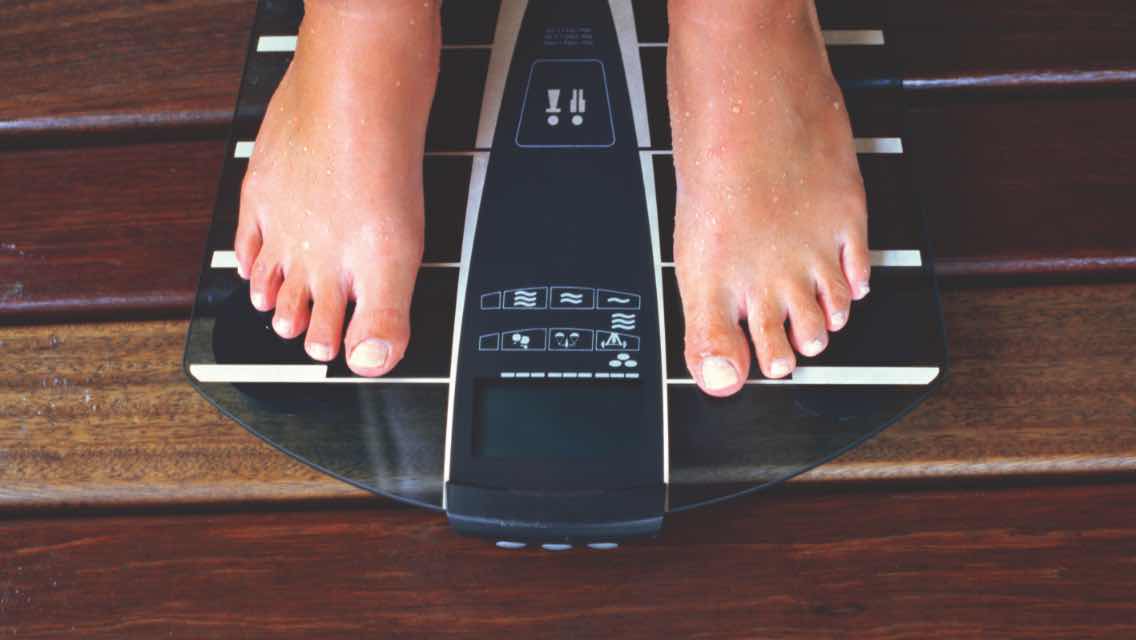Nutrition tends to be one of the hardest things for most individuals to change on a weight-loss journey. While it is a critical piece of the puzzle, there are other key areas that we also need to put effort into for a successful outcome.
Early in my career as a dietitian, I’d have my clients focus solely on the food they were putting in their mouths. But over the years, I’ve learned that implementing these five non-food tips not only led to better results, but also improved my clients’ eating habits without them even needing to focus on them. Now, I’d recommend them to anyone seeking better health or going after a weight-loss goal.
1. Stop trying to lose weight.
What if the one thing that was holding you back from success was your actual goal itself?
This tip has everything to do with getting your mindset right. I see it all the time: People focus solely on the number of pounds they want to lose and base their perception of success on whether or not they show progress on the scale.
The problem with concentrating on weight loss is that you’re missing the bigger picture of any true underlying issues. You also tend to get suffocated by your goal — all you’re thinking about is that you want and “need” to lose weight. For many of my clients, it’s literally all they ever thought about for years, and they found themselves being a slave to a scale.
Our philosophy on weight loss has everything to do with sending your body the right signals through behaviors that will have a positive impact on your hormones and your health — and that has nothing to do with a specific amount of pounds lost each week. Weight loss is complicated for most of us. We each have our own unique “hormone soup” that has to be in balance in order for our bodies to perform in the way that we want them to, which, in this case, means breaking down and releasing body fat.
Focus on getting healthy on the inside first. When I’ve gotten my clients to start thinking about and choosing behaviors that are going to make them healthier — such as drinking water more than any other beverage or going to bed at the same time each night — they are creating a foundation of healthy habits that will have a larger and longer impact on their bodies and metabolism. And by default, the weight starts coming off.
(If you want to get a baseline of where your health and metabolism are at now and recommendations for the best efforts to improve them, consider a lab test or assessment.)
2. Work on your sleep.
Establishing a sleep regime is a major focal point of most of my client’s programs. Outside of a poor diet, it’s without a doubt the number one thing that gets in the way of their results.
Getting seven to eight hours of sleep each night is often what’s recommended. Yet, more than 70 percent of Americans don’t get that amount. Not only are we not getting enough sleep, but also poor-quality sleep (often interrupted or not getting into a deep, REM sleep). Together, that can contribute to weight gain or stagnant weight-loss efforts.
Sleep loss can cause all sorts of issues with your hormones, including an increase in the hunger hormone (ghrelin) and stress hormone (cortisol), as well as reduced insulin sensitivity. It’s no wonder that I see my clients’ feelings of being “wired and tired” and out-of-control hunger or food cravings completely subside when they start getting enough sleep. It’s almost as if their “issues” with nutrition go away without even having to intentionally work on them.
For some, learning the impact sleep loss has on their metabolism might be enough to get them to go to bed on time. Others, however, might have to work a little harder at it depending on how long they’ve been sleep deprived.
One of my go-to tricks is to start a wind-down routine an hour before bed: Put on your pajamas, brush your teeth, darken and cool your bedroom, and avoid all electronics. If I’ve had a busy day at work and feel my mind racing, I try to journal down as many thoughts as possible before bed so I can go to sleep with a clearer mind. Nourishing supplements, including magnesium, melatonin, theanine, GABA, or even 5 HTP, can also be used as shorter-term solutions to help you get some shut eye.
3. Stand or walk more than you sit.
For many of us, how much we sit during the day may not even be on our radar. Think about this: The average American has a daily commute to and from work totaling 1.5 hours and sits at a desk for another eight to 10 hours each day. If you’re like most adults, you may even get home from work (stressed and exhausted) and plop onto the couch for another one to two hours. Even if you’re working out for an hour or so each day, you can see that more than half of the day (for most of us) is actually spent being sedentary.
Growing evidence suggests that inactivity can be a cause of obesity, insulin resistance, dyslipidemia, type 2 diabetes, hypertension, and other metabolic diseases. Additional symptoms can include low energy, tiredness, or increased hunger. What’s hard about hearing that is most of us are really busy so we often don’t realize — or feel like we can control — how sedentary we actually are.
Knowing how much time you spend sitting versus standing or moving during the day can be a great first thing to track. Chances are, you’ll most likely surprise yourself with what you find. Activity monitors are helpful for tracking your steps each day so you can work toward hitting the optimal goal of 10,000 steps or more per day.
Because work tends to be the place where we spend the longest amount of time sitting, I like to start there with my clients and create new ways to be more active. Many employers are now offering the option for a standing desk, or you can create your own makeshift standing desk by propping your computer on top of another flat surface (such as a box or shelf).
Other efforts you can make include going for a walk midday or after lunch, choosing to stand during meetings, and taking the stairs as often as you can. At home, try to do an evening stroll after dinner, or make every effort possible to not head straight to the couch as soon as you get home.
4. Manage your stress.
Telling my clients they need to manage their stress better is never a fun or exciting topic to talk about. But knowing how much stress can wreak havoc on your health and hormones — and seeing how often it gets in the way of success — it’s something I try to work through with them no matter what.
Early in my career, the majority of my day was spent on the phone with Life Time members reviewing their lab test results and putting them on specific and unique protocols depending on what their results showed. Over the course of doing more than 2,000-plus reviews, the barrier I found to be most often hindering one’s metabolism was elevated or imbalanced cortisol (stress hormone) levels.
For my clients, it was reassuring to learn that their symptoms, such as low energy, sleeping issues, or uncontrolled sugar or salt cravings, had a cause. And as a coach, I had insight and knowledge to know what sort of habits or new behaviors were going to have the biggest impact toward alleviating those symptoms and success with their weight-loss efforts.
Is it as simple as telling someone not to be stressed? No. A lot of our stressors have very much to do with our lifestyles, and a lot of the time, our family and our jobs aren’t things we can easily change. But you can do things to help build your resiliency against those stressors.
There are all sorts of options and resources available, including daily meditation, deep breathing practices, or even supportive supplements, such as theanine or Relora®, that have been shown to have a positive impact on lowering stress hormones. For my clients, I found yoga to be one of the simplest things to start doing that also has a great impact on hormones and overall feelings of well-being. You not only learn breathing techniques, but yoga also helps to calm your mind and provide you with a great physical workout.
If you think stress could be having an impact on your health, you could consider assessing where your levels of cortisol are and gaining guidance for your own unique protocol.
5. Structure your exercise — and do it often.
You can’t out-train a bad diet. But a regular and structured exercise plan still has a huge impact on the health of your body.
Routine exercise sessions can reduce your body’s need for insulin (your fat-storing hormone) by helping your cells and muscles become more sensitive to it. By decreasing your need for insulin, you can also decrease overall inflammation inside your body which can mean less body (and belly) fat.
I’ve had clients who historically fell in and out of fitness routines multiple times, whether they lost interest, didn’t see results, or maybe even hit it too hard. I try to make it a goal for them to get into a sustainable plan they can continue for the long haul. Although any sort of activity is better than no activity, if you’re looking for specific results, it’s important to have a plan. I know that my clients who’ve trained with me or been given a written exercise plan not only feel more confident going to the gym, but also stick to it longer and exercise more regularly.
You want each exercise session to be designed and implemented in a way that creates a stimulus to help your body change — and that goes for both cardio and strength-training sessions. Does that mean you have to hire a fitness trainer? Maybe. There is definitely a benefit (especially with our busy lifestyles) to have someone else do the planning for you, assess what exercises might be best, and add in some extra accountability and motivation.
Even if you don’t hire a trainer or coach, make it a goal to do three to five exercise sessions each week that include a mix of both strength and cardiovascular training. I’m a big fan of my weight-loss clients working out first thing in the morning, as it tends to not only improve their mood for their day, but also starts it off right, making it easier to stay on track with other healthy choices to extend that good feeling.




